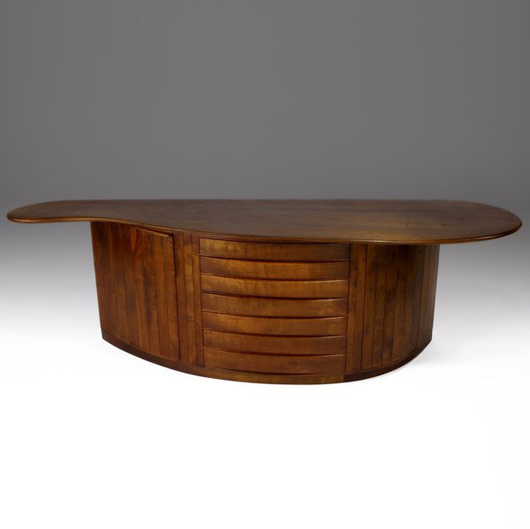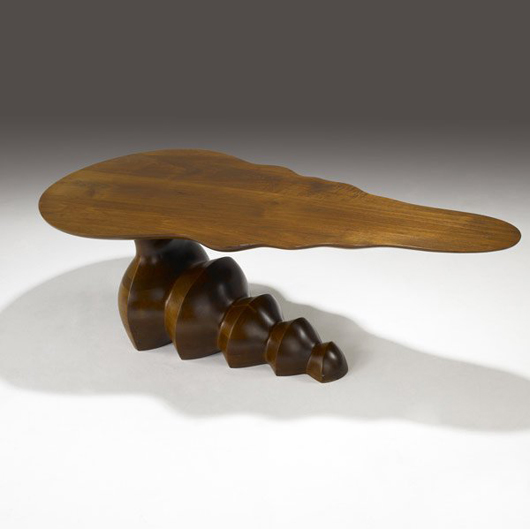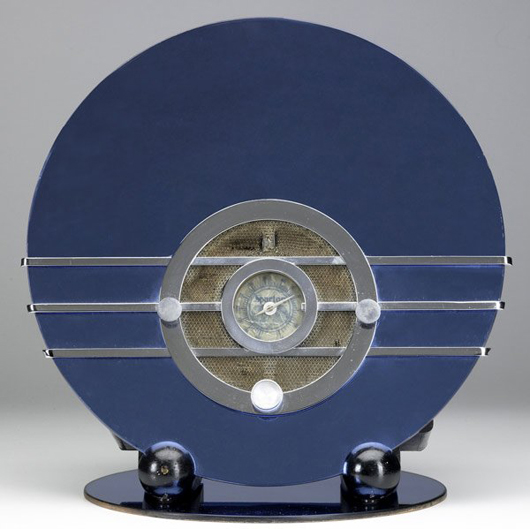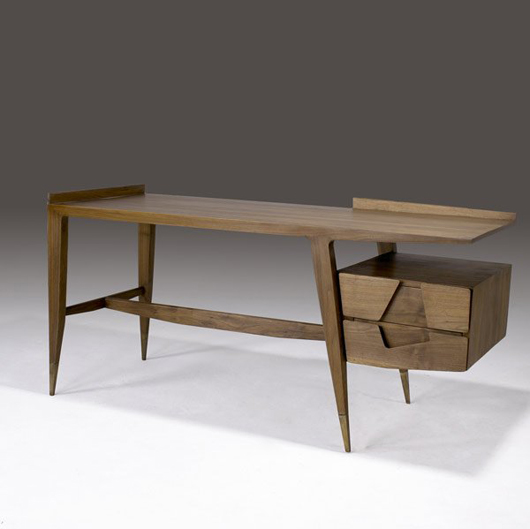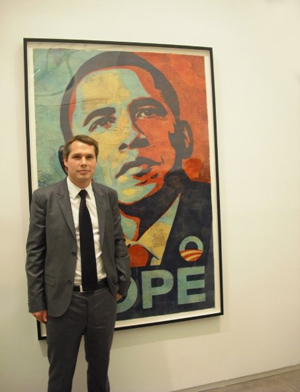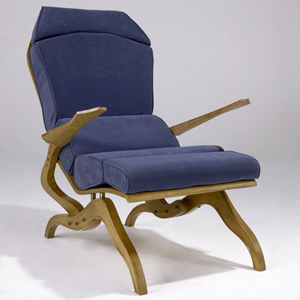
John Sollo and David Rago will present these in a sale of approximately 960 lots of Modern design that also includes silver, contemporary ceramics, glass, jewelry, lighting and textiles. The auction will be conducted Oct. 24-25 at 11 a.m. Eastern. LiveAuctioneers.com will provide Internet live bidding.
“This is a strong selection that takes buyers from Frank Lloyd Wright to Gio Ponti to Ron Arad” said John Sollo. “I expect the exceptional work here from Wharton Esherick, Albert Paley, Campo & Graffi and Phillip Lloyd Powell, Norman Cherner and Richard Blow to get a lot of attention. It certainly merits it.”
Studio furniture figures significantly in the sale, including one of the finest pieces to come to market, a Wharton Esherick buffet with a sculpted walnut top on a curved base with drawers and doors, estimated at $280,000-$380,000.
Also on the block is the carved and painted entry door from Phillip Lloyd Powell’s 1970s residence, which has been razed. The door and surround, with multiple layers of carving, shows the influence Powell’s trips to India. It is estimated at $45,000-$65,000.
Sollo Rago’s always showcases the studio work of George Nakashima. Among the least expected of the pieces in this sale is a rare chessboard in dark rosewood with holly insets, made in 1979 and estimated at $30,000-$50,000. Another Nakashima highlight is an exceptional walnut double chest with eight drawers and freeform, free-edge top, estimated at $20,000-$40,000
The sale contains four tables that are some of the best work by Albert Paley that Rago’s specialists have seen. Lot 487, one of the four, is a pedestal dining table of formed and fabricated steel with bevel-edged plate glass top from 1996, estimated at $25,000-$45,000.
Richard Blow and his workshop, Montici Marbles, revived the art of pietra dura, transforming the ancient art of inlaid images created in stone into a modernist one. The sale has eight of these unique works. Six are hanging plaques. Two are rare tables, notably lot 8, a coffee table with decorative hardstone inlays in granular black marble top. The table is estimated at $9,000-$14,000.
Designer-made furniture is included, as well, including a Mesa freeform coffee table by T.H. Robsjohn-Gibbings for Widdicomb, estimated at $20,000-$40,000; a nine-drawer dresser by Tommi Parzinger with etched brass drop pulls and black lacquer finish, estimated at $12,000-$18,000; and an exceptional sculpted walnut dining table by Vladimir Kagan for Dreyfuss, its boat-shaped top inset with glass tile panel surrounded by bronze trim, estimated at $10,000-$20,000.
European/Scandinavian offerings include a Jaques Adnet two-door cabinet with stitched black leather covering and brass hardware on faux bamboo legs, estimated at $10,000-$20,000; is a set of four Standard chairs by Jean Prouve, estimated at $10,000-$20,000; and a Papa Bear chair and matching ottoman in teak with burgundy leather upholstery by Hans Wegner, estimated at $6,000-$9,000.
Other furniture highlights include a classic rosewood Thin Edge three-drawer chest from George Nelson for Herman Miller, estimated at $3,000-$5,000; a rare and possibly unique pair of continuous plywood lounge chairs with faux-cowhide upholstery by Norman Cherner for Plycraft, estimated at $8,000-$12,000; and an Edward Wormley for Dunbar walnut pedestal side table inset with Tiffany Favrile tiles, estimated at $8,000-$12,000.
Sollo Rago is located at 333 N. Main St. with Annex Gallery at 204 N. Union Street in Lambertbvuille. For details call 609-397-9374.
View the fully illustrated catalog and sign up to bid absentee or live via the Internet during the sale at www.LiveAuctioneers.com.
Click here to view Rago Arts and Auction Center’s complete catalog.
ADDITIONAL LOTS OF NOTE
